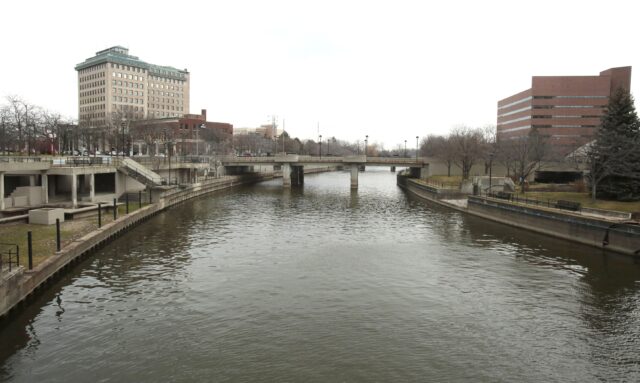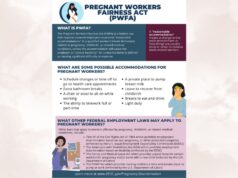
The biblical author of Proverbs advises, “Drink water from your own cistern; flowing water from your own well.” But in the centuries before Jesus Christ’s birth when these verses were written, water pollution from chemicals and artificial contaminants was unknown. In contemporary America, it’s a persistent phenomenon.
To understand how Catholics are responding to water pollution in their communities, OSV News spoke with advocates and agencies in Philadelphia, St. Louis, and Flint, Michigan — all cities which have had or continue to experience clean water issues.
On Mar. 14, the Environmental Protection Agency proposed enforceable limits on “forever chemicals” known as PFAS (Per-and polyfluoroalkyl substances). PFAS are linked to cancer, suppressed immune responses and other health concerns. The new EPA rule requires public water system monitoring to strictly limit six PFAS chemicals, instead of the previously unenforceable guidance of just two.
The EPA’s action signals heightened concerns about drinking water quality and safety.
A Feb. 16 TIME Magazine article informed readers that “the 2021 Report Card for America’s Infrastructure, released by the American Society of Civil Engineering, gave a dismal D+ grade to the country’s more than 16,000 wastewater treatment plants … The U.S. drinking water infrastructure earned only a marginally better rating, with a C-grade.”
John Humphreys, a biochemist who co-founded Philadelphia’s EcoPhilly, an independent volunteer organization that partners with the archdiocese, said the Mar. 24 Delaware River latex solution spill was diluted enough to not exceed legal pollutant levels. The river flows by Philadelphia’s Center City waterfront, an area popular with tourists.
Nonetheless, he said, “this spill is one of many occurring across the country and in the world, often with no organized cleanup at all.”
“We are, as a society, heavily dependent on literally millions of different chemicals. Most are benign, but the presence of so many artificial chemicals at various levels in our environment is an uncontrolled experiment,” Humphreys said.
Inspired by “Laudato Si,” the 2015 encyclical issued by Pope Francis, EcoPhilly aims to develop and encourage the formation of “creation care teams” in every Catholic parish, church and school in the Philadelphia Archdiocese.
Humphreys said, “Spills will take place — that’s unavoidable. We must strive to minimize the use of chemicals with long-term effects, for our own safety, and that of the planet.”
If contemporary Philadelphia is a model of Catholic eco-cooperation, decades ago, St. Louis was more problematic.
Sister of Loretto Mary Ann McGivern has studied U.S. weapons production and peace issues for decades. While serving in St. Louis, she told OSV News she was surprised to discover — from a stranger on an airplane — her adopted hometown’s historic connection to the destructive power of America’s atomic age, and the poisoning of both water and land.
In 1977 — while Sister McGivern was jetting cross-country — her seat-mate shared his destination as a lecture concerning uranium pollution and groundwater contamination. Sister McGivern mentioned a St. Louis corporation that manufactured nuclear weapons.
“He said, ‘Well, then I suppose you’ve also been working on your own nuclear contamination site,'” Sister McGivern recalled. “And I said, ‘What nuclear contamination site?'”
That site was the resting place of byproducts from America’s first successful processing of uranium — by Mallinckrodt Chemical — used in both atomic bombs dropped on Japan to end World War II in 1945. There were in fact several nuclear industry waste sites in St. Louis — and as late as March, 2023, the U.S. Army Corps of Engineers planned testing of a park near north St. Louis County’s still-contaminated Coldwater Creek, where remediation won’t end until 2038. Nearby West Lake landfill — where cleanup hasn’t begun — contains a decade-long fire threatening radioactive waste.
Asked about the reaction of the faithful, Sister McGivern told OSV News, “There was not a Catholic uprising. St. Louis is a very Catholic city, but that means many people who worked at McDonnell Douglas were Catholic — and at that point, McDonnell Douglas was the biggest employer in the region.” In the 1970s, McDonnell Douglas built missile nuclear delivery systems.
One simply didn’t challenge the weapons industry, Sister McGivern explained. But children paid the price.
Noting a troubling pattern of parish illnesses, Father Gerry Kleba, newly assigned pastor of Immaculate Conception in St. Louis’ Dardenne suburb, told his social concerns committee in 2000, “This parish has more sick and dying children than I have ever experienced in my 35 years as a priest.” He was quickly educated about the area’s nuclear past and present.
But Father Kleba’s resulting crusade for answers wasn’t appreciated by everyone. “Gerry Kleba really got some blowback for his insistence that in his parish out in Weldon Springs, he had children dying of cancer, and it ought to be investigated,” Sr. McGivern shared. “People just didn’t want to do that.”
In 2019, the federal Agency for Toxic Substances and Disease Registry concluded Coldwater Creek’s contamination resulted in potentially higher rare cancer risks. A bill brought before the Missouri Legislature in March intends to compensate St. Louis residents exposed to nuclear waste.
It’s progress — but just a month earlier, chemical contamination closed the sixth of seven drinking water wells in the St. Louis suburb of St. Charles.
EPA statistics reflect unequal environmental impacts for communities with racial or ethnic minorities and high poverty, which are less likely to have safe drinking water, or be granted federal funds to make it so. This disproportionate reality was keenly felt by the citizens of Flint, a majority African-American city an hour’s drive northwest of Detroit.
Amidst 2014 budget cuts, government officials switched Flint’s water access from clean Lake Huron to polluted Flint River. Residents protested, citing strange looking, smelling, and tasting water, skin rashes, hair loss and other complaints. Officials resolutely maintained all was well, while corrosive river water leached lead from pipes. Water was contaminated, and a deadly outbreak of Legionnaires’ disease killed 12 and sickened 87.
“There was a lack of trust in the community for good reason, because people were told the water was safe — and the water wasn’t safe,” Katie Baxter, chief executive officer of Catholic Charities of Shiawassee and Genesee Counties in the Diocese of Lansing, told OSV News.
Catholic Charities‘ standing in the city was an asset in the midst of disaster. “We’ve been a trusted voice in the community for decades. So when the Flint water crisis occurred, we knew we needed to step up,” Baxter shared.
Help came from near and far. “We had many times where trucks would be coming into Catholic Charities with huge water donations,” said Baxter. “So we had to find places to store it and distribute it as quickly as possible.”
A 2021 settlement of $626 million was awarded to victims, but not before extensive damage was done to both community health and confidence — and just as in St. Louis, children are paying the price of toxic contamination.
“Flint is still not completely recovered from the water crisis. We don’t know how many years it will impact us,” Baxter explained.
“One of the things we know is the long-term effects of lead. We do know that children have been negatively impacted cognitively as a result of that. And that’s not something that goes away,” said Baxter. “Sometimes these impacts, these environmental circumstances, have real long-lasting implications. It can be very devastating for communities.”






